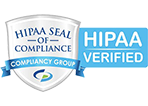Does Pain Management Help With Healing, Too?
Pain is often an overlooked part of recovery from trauma. Whether you’ve suffered a herniated disc, a knee injury, or any other impact injury, managing your pain is critical to making a full recovery. Read on to learn more about pain management and its critical role in helping you heal from an injury and restoring your quality of life.
Types of Pain You May Experience After an Injury
There are many types of pain you can experience after trauma or an impact injury. The type of pain you’re dealing with—and its location and severity—will all factor into the pain management plan your medical team provides for you. Here are some of the common sources of pain after an injury:
- Acute Pain. This type of pain is sharp and is limited to the affected area, and it can last for days or weeks, depending on the severity and type of injury you’ve sustained.
- Chronic Pain. When pain lasts for three months or more, it’s considered chronic pain. This type of pain is often associated with nerve damage, tissue damage, or conditions that cause pain over time, including arthritis.
- Neuropathic Pain. Sensations like burning, numbness, or tingling may occur after an injury, and they’re often caused by inflammation or nerve damage.
Managing Pain Helps With Healing
Managing your pain is crucial when it comes to recovery after an injury. Aside from the distraction and distress pain causes, keeping pain under control allows you to take part in any treatments—like physical therapy or chiropractic care—that your doctor has prescribed for your recovery.
Other Benefits of Pain Management
There are several reasons why pain management is critical after an impact injury. Whether you’re suffering from a musculoskeletal injury or soft tissue damage, pain management can:
- Reduce the Risk of Further Injury. As you recover from your injury, effectively managing your pain reduces your risk of sustaining further injury or—worse yet—disability. Pain management helps you avoid overexertion, reducing the likelihood of more serious harm.
- Improve Quality of Life. Pain after an injury often worsens over time and ignoring it won’t make it go away. Appropriately managing pain will help you participate in your everyday activities with less discomfort, allowing you to enjoy life.
- Avoid Dependence on Prescription Medications. Prescription medications only provide temporary pain relief, and prolonged use can quickly lead to addiction. Natural pain management remedies like manual, chiropractic care, or physical therapy deliver long-term solutions for managing pain and improving mobility, without exposing yourself to the risks that accompany prescription medication usage.
- Promote Good Mental Health. Pain has a big impact not only on your physical health but also on your mental health. Managing pain effectively can help you avoid developing conditions like depression and anxiety. Reducing pain goes together with reducing stress, allowing you to focus on healing, rather than your challenges.
Take the First Step Toward Effective Pain Management Today
No matter what type of pain you’re suffering from, it could be keeping you from making a full recovery after an injury. The caring medical team at Impact Medical Group of Sarasota is ready to provide you with a pain management plan that addresses your pain at the source, so you can focus on recovery. Call us today at (941) 722-8103 to schedule your free consultation.
